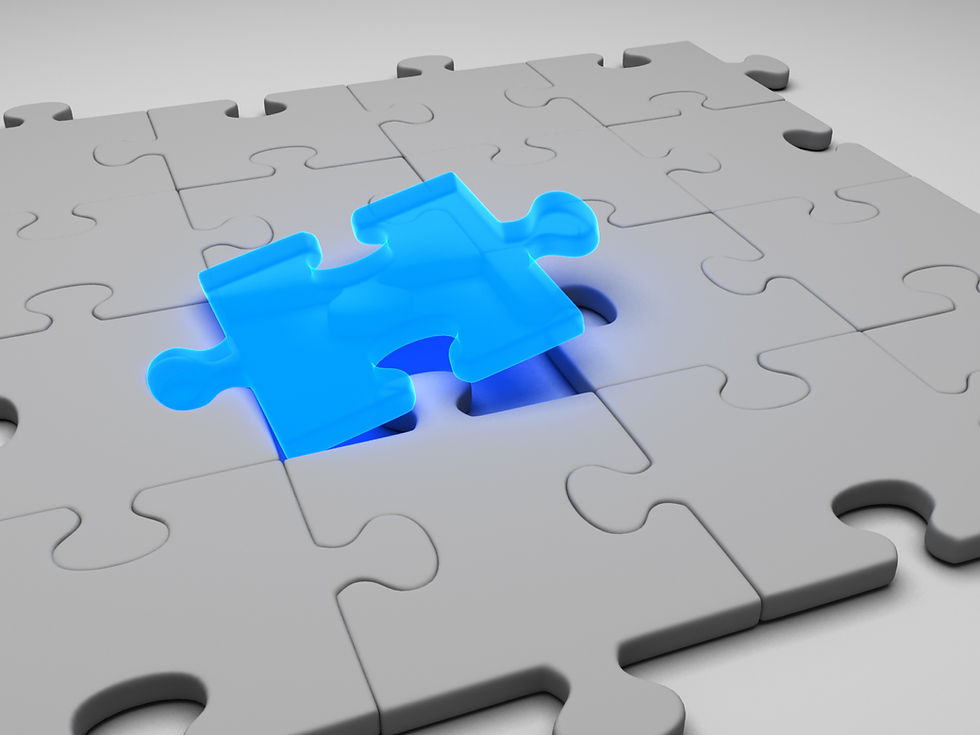Human Body: the Electromagnetic Brain
- Sylvia Rose

- Apr 18
- 5 min read
The human brain is a complex organ powered by forces of electricity and magnetism. These forces work together to create thoughts, feelings and actions, influencing brain function and dysfunction.

The brain is an electrical generator, cranking out about 20W of electricity, enough to power a small LED light. Generated and modulated by the brain's neuron network, electrical activity is the way cells communicate within the nervous system.
The brain is an incredibly energy-efficient device. In terms of computing, it executes the equivalent of an exaflop, which is a billion-billion (1 followed by 18 zeros) mathematical operations each second.
Spark of Life: Generating Electricity in the Brain
Electricity in the brain arises from the movement of ions across neuron membranes. Ions are positive or negatively charged particles created from atoms.
An atom has a nucleus of protons (positively charged) and neurons (neutral). Opposites attract. Electrons, negatively charged, orbit the nucleus, bonded by the positive force of the protons.

Usually the number of protons and electrons is balanced. If the bond is weak, as in conductive materials like copper, electrons can be knocked from their orbit and become "free".
An electron may join up with another atom. When an atom loses electrons it becomes a positively charged ion. For instance neutral sodium (Na) reacts with chlorine (Cl), which readily absorbs electrons. Na loses one electron to take on a positive charge.
When a chlorine atom gains electrons, it becomes a negatively charged ion (Cl to Cl- or chloride). Activity of ions generates electrical charges, currents and signals in biological systems and the broader context of electricity
In neurons, the brain's primary cells, potassium ions (K+) and negatively charged organic molecules are inside the cell. Sodium and chloride ions are concentrated outside. Overall the neuron has a slight negative charge.

Potentials & Actions - Process
Resting Potential: In its resting state, a neuron maintains this negative electrical charge compared to the outside. This difference in charge is the the resting potential.
Action Potential: When a neuron receives a signal from another neuron, it can trigger a chain reaction or action potential. This occurs when enough excitatory signals cause the neuron's membrane to depolarize.
Ion Channels Open: Depolarization triggers the opening of voltage-gated ion channels, allowing a rapid influx of sodium ions into the neuron. This further depolarizes the membrane, creating a positive charge in the neuron.

Signal Propagation: This electrical charge, the action potential, travels down the neuron's axon, the long, slender projection able to transmit signals to other neurons.
Synaptic Transmission: Upon reaching the end of the axon, the electrical signal is converted into a chemical signal at the synapse, the junction between two neurons.
Neurotransmitters, chemical messengers, are released from the presynaptic neuron. They bind to receptors on the postsynaptic neuron, triggering another action potential.
Electrical signaling sends information across the nervous system. Overall about 100 billion neurons move signals through brain and body. The cycle of electrical and chemical signaling forms complex neural pathways to manage brain activity.

The Invisible Force: Magnetism & the Brain
Where there's electricity, there's magnetism. When neurons fire, they generate electrical signals and magnetic fields simultaneously. All brains and bodies have these fields, and so does every charged particle within.
Electromagnetic Induction: The movement of charged particles (ions) creates magnetic fields around neurons. The fields are dynamic and change rapidly with neuronal activity.
Magnetoencephalography (MEG): Scientists use the non-invasive technique of magnetoencephalography (MEG). It measures magnetic fields to investigate how brain regions interact.
Abnormal electrical activity, such as seizures, can indicate underlying neurological conditions. MEG and EEG (electroencephalography) are used to diagnose conditions like epilepsy, sleep disorders, and brain tumors.
MEG (and EEG) signals come from the net effect of ionic currents flowing in the dendrites of neurons during synaptic transmission.

Wearable brain scanners apply the same technology but in helmet-style form. This allows people to move around, especially beneficial for treating children.
Transcranial Magnetic Stimulation (TMS): While MEG passively measures magnetic fields, Transcranial Magnetic Stimulation (TMS) uses magnetic pulses to actively stimulate brain regions.
TMS can temporarily disrupt or enhance brain activity, to investigate action of different brain areas in cognitive and behavioral functions. It can be used to treat neurological and psychiatric disorders.
TMS and deep brain stimulation (DBS) use electrical or magnetic stimulation to treat conditions like Parkinson's disease, depression, and chronic pain.
Synchronized electromagnetic activity among neurons in is necessary for functions like memory retrieval. Coordination over brain networks also influences cognitive processes like attention and problem-solving.

Disruptions in electrical signaling can cause cognitive impairments. Conditions like Alzheimer's arise from breakdowns in electrical and chemical signaling among neurons.
Functions & Implications
Sensory Perception: Electrical signals are generated in sensory receptors in response to stimuli like light, sound, and touch. The signals are transmitted to the brain, where they're processed to create perception of the world.
Motor Control: Electrical signals from the brain travel to muscles, triggering muscle contractions and enabling movement.

Thinking & Memory: Complex neural circuits, driven by electrical and chemical signaling, are responsible for cognitive functions like thinking, reasoning, and memory.
Emotions: Specific brain regions, such as the amygdala and hippocampus, are active in processing emotions. Their activity is dependent on the precise interplay of electrical and chemical signals.
The principles of brain function inspire development of new technologies, such as the brain-computer interface (BCI). These allow humans to control external devices with their thoughts.
By interpreting brain signals, a BCI converts brain activity into commands for controlling external devices like computers or robot limbs. BCIs are increasingly important in medicine and research.

READ: Lora Ley Adventures - Germanic Mythology Fiction Series
READ: Reiker For Hire - Victorian Detective Murder Mysteries


